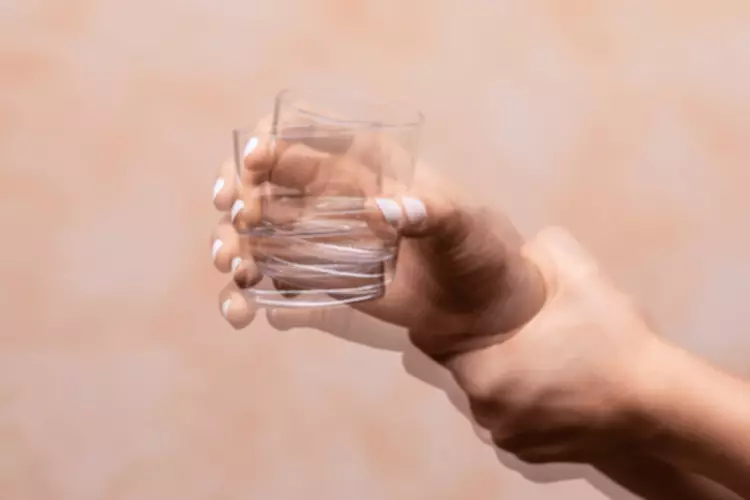Because alcohol dilates blood vessels and damages the vascular system, it can aggravate rhinophyma and other types of rosacea. “The authors proposed that this connection between alcohol intake and rhinophyma may be because alcohol is such a strong inducer of flushing and vasodilation,” Dr. Baldwin said. The researchers theorized that genetic predisposition is likely a critical factor for developing rhinophyma, since alcohol consumption alone is not sufficient to cause the condition. The average alcohol intake of those with rhinophyma was 14 units per week, versus just 3 units of alcohol per week among the control group. Analysis revealed a significant correlation between alcohol intake and severity of rhinophyma, with a heightened risk among moderate drinkers and the highest risk among excessive drinkers. If you develop rhinophyma, your nose may appear red, large, and even bumpy or bulbous.

Alcoholic Nose FAQs
- The subunit method is a surgical technique based on utilizing and enhancing the nasal aesthetic subunits to optimize cosmetic and functional outcomes (Figures 2 and 3).62,63 Incisions are made along the junctions of nasal aesthetic subunits.
- The second study also found a connection between drinking and rosacea.
- (A) Intra-operative markings with six subunit based flaps (dorsum, two sidewalls, two alae, tip).
- Excision with a 10-blade scalpel, Weck blade, or disposable razor is performed until adequate debulking of tissue and visualization of the pilosebaceous units is achieved.
If you or a loved one are experiencing side effects related to alcohol abuse and addiction, help is available. If you’re considering rhinophyma surgery, start by talking to your healthcare provider. why do alcoholics have big noses They can talk to you about the procedure and you can share the results you would like to achieve. This can help your provider understand the shape and aesthetic that you’re looking for.
Rosacea Alcoholic Nose
- The shoulders and chest are also susceptible to looking more flushed or red after drinking alcohol.
- Excess skin from the “tissue expanded effect” of chronic phymatous growth is removed.
- Complications occurred in 14.3%; however, there were no recurrences or revisions reported (Tables 6688).
- This can help your provider understand the shape and aesthetic that you’re looking for.
- Increased activation of the innate immune system is partially due to overexpression of toll-like receptors leading to activation of NF-kB with subsequent production of inflammatory cytokines, mast cells, and macrophages.
Although this is a dramatic and distressing variant of rosacea, the condition is treatable, and with supportive management of patients’ emotional and clinical needs every day need not be Red Nose Day. It is essential to fully understand the patient’s concerns and consider the emotional impact of the condition on the patient. Attention must be given towards systemic treatment of rosacea and avoiding trigger factors to achieve symptoms control. Even a single alcoholic drink can cause flare-ups for many people with this condition.
Surgical treatments
Nurses are an integral part of the team for post-operational monitoring in the healthcare facility. Lastly, pharmacists play a role in confirming the proper antibiotic coverage to prevent postoperative infection. If preventative techniques don’t work and you develop this skin condition, surgery is the most common method of treatment. Some acne medications may also reduce many of the symptoms of rhinophyma.

Through proper diagnosis and prescription, you can clear your skin and nose from unwanted large bumps, rosacea flare attacks, dry skin, and a “purple nose,” among other things. If you think that rosacea and rhinophyma are what you have, you should contact your physician and discuss this right away. A licensed medical professional should be able to identify the signs and symptoms, just by examining the physical appearance of the nose. Surgical therapy, along with topical treatments, are incredibly effective for helping return the nose to its original shape without harming the bone and cartilage structures. Drinking alcohol has been debunked by research as a direct link to this condition. But we do know that drinking can cause more flushing in people with rosacea.
Hypertrophy of the sebaceous glands and fibrosis of underlying connective tissue is the pathologic basis of this condition. Once the rhinophyma has undergone evaluation, a discussion of options is next. Viable choices always include the possibility of not performing any surgical intervention. In the presence of severity levels 1 or 2, the patient may elect to continue to observe.
Alcoholic Nose (Rhinophyma): The Real Cause, and How to Treat It
Is the TikTok BORG Trend Just Another Form of Binge Drinking? – Healthline
Is the TikTok BORG Trend Just Another Form of Binge Drinking?.
Posted: Thu, 16 Feb 2023 08:00:00 GMT [source]
In some cases, surgical treatment can improve appearance and help ease anxiety. Later, the nasal skin grows and the tip of the nose becomes larger. It is benign initially, but it may block airways and increase the risk of skin cancer.
Propofol Addiction
What is commonly called “alcoholic nose” is actually a skin condition called rhinophyma (Greek for “nose growth”). Rhinophyma is in a category of skin conditions known as rosacea, which causes chronic inflammation of the skin. This chronic inflammation is caused by broken blood vessels and sores on or around the nose, causing it to appear red, swollen, and bumpy. Alcoholic nose, or drinkers nose, is a skin condition commonly characterized by a bumpy, red, or swollen appearance of the nose and cheeks.